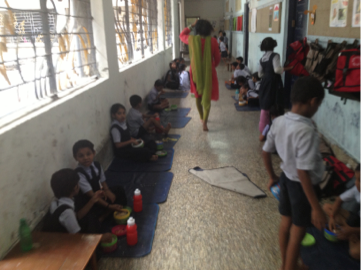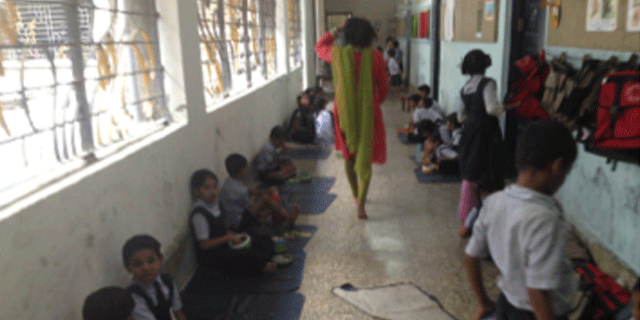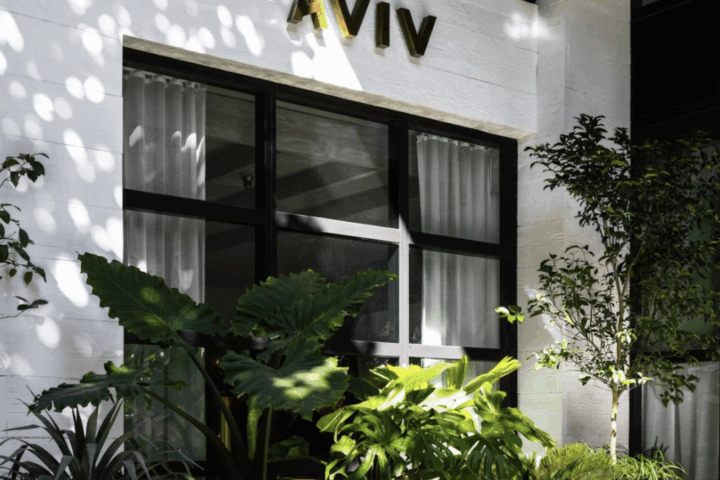The following article was written this summer for Reuters after Ananya traveled to India to interview supervisors, teachers, and students at NGO schools.

“A mouse ate my homework,” said Sahil Gupta, a lanky Grade 6 student at a municipal school in Mumbai, India.
“What do you mean?” demanded Deepti Fernandez, her voice scarcely concealing her displeasure at an excuse she was hearing for the third time in a month from her students.
“A mouse, it ate my homework,” said the 11-year-old again, without batting an eyelid.
Was this some sort of joke on the new teacher? Fernandez, a petite woman with a reputation for handling recalcitrant wards, was determined to get to the bottom of the issue.
What she found humbled her, the wide-eyed teacher said, sitting in her classroom of the Kherwadi Municipal School.
“After visiting his home, I realized that a mouse eating a boy’s homework was not just a silly excuse but a harsh reality,” she said reverently. “Sahil lived in a room, shared with 7 other family members and scores of mice.”
The government-run school, crammed between slums and narrow lanes packed with cacophonic rickshaws, is one of many that cater to impoverished children in Mumbai, a bustling city of more than 20 million people.
As hundreds of children, giggling and shouting swarmed the hallway when the bell rang, Fernandez stood at the door to her classroom, greeting each ward with a warm smile. The students, each wearing a navy blue uniform that had been washed one-too-many times, were all bubbling with energy.
Fernandez, and other teachers I spoke to across Mumbai, are dedicated to helping their students surmount the befuddling obstacles they face. Such a challenge calls for a drastic change in the conventional method of teaching. For instance, nearly all the teachers struggled with a disconnect between their expectations from their students and the reality of their wards’ lives. Most agreed that if this gap between
classroom expectations and the larger community was bridged, it would significantly enhance the effectiveness of teachers.
Existing research and thinking proves that teaching quality is the biggest driver of learning outcomes. Several methods to improve hiring practices, working conditions, training and development, and performance management have been tried and tested.
However, most of these methods have only been proven in schools which operate under traditional circumstances. What happens when the disconnect between the classroom and the larger community is as great as that of a municipal school?

Photo by Ananya Tinaikar
According to the World Bank, there are 816 million people earning less than US $2 per day in India, almost three times more than the entire population of the United States. Non-government education programs, such as Akanksha and Aseema adopt schools and serve free mid-day meals to increase student attendance in schools serving impoverished communities. In such situations, one must ask, “Are the conventional modes of improving teachers sufficient?”
More interviews with teachers at the Kherwadi and Shindewadi Municipal Schools, suggest that for teachers to be more effective in such environments, conventional teaching methods need to be enhanced to include matters relating to the community that surrounds the classroom. To do this, there needs to be a fundamental understanding that teachers can play an important role in influencing the larger community.
“I can empathize with a student but I can’t understand them,” said Kajal Malhotra, a Grade 7 teacher, explaining that one of the biggest struggles teachers face is engaging with their students on a personal level.
Students in municipal schools often have turbulent home lives which can translate into their school work. Various workshops are in operation amongst municipal schools which train teachers to anticipate these scenarios, but very few teachers actually know how to deal with them when the time comes
Teachers have trouble assisting students because they have never experienced what the student is going through. This lack of experience inhibits the teacher’s ability to effectively assist the student with their home life, eventually affecting the learning outcome of the student.
A solution to this challenge could be to create a formal program which allows teachers to visit the homes of their students and engage with the community. This would also allow teachers to better understand the community in which they work in and gauge their students’ situation accordingly.
“Anyone could have taken my shirt, even a school uniform is a form of clothing,” said a student of Jayashree Godbole, Grade 6, whose dress was stolen from a clothesline. In municipal schools, most of the setbacks students face is ones which don’t directly link to school but are outcomes of their lifestyles.
Municipal schools usually collaborate with social service agencies to address issues linked to homes and act as a bridge between teachers and parents.

It is time to take this facility to the next level. The student-teacher relationship would significantly improve if the teacher were to be trained with the same skills as that of a social worker. A system that encourages a weekly exchange of information between teachers and social workers will also benefit both parties in addressing the child’s needs.
Being a teacher, in any school, requires you to focus on your students, personal affairs aside. But displaying a happy attitude in the classroom is easier said than done.
“I keep a smile on my face, but I’m not a robot,” said Lizzy D’Souza, Grade 7, who juggles her busy schedule of handling household chores, the needs of her two growing boys and husband.
The mantra, “Keep a smile on your face,” is more relevant in school like Kherwadi Municipal School where the teacher can often be the single strand of normalcy in the child’s life. Carrying problems at home to the classroom can worsen the stress of working in municipal facilities and works at odds to better student-teacher relationships.
One way to address this situation is to create periodic workshops that instruct teachers on how to manage their emotions with their students. Going a step deeper, the school could set up a date when teachers could gather and discuss student related issues, teacher matters and so on. These meetings need not be formal or mandatory, but could provide as forum where teachers can discuss their needs and how the school can meet them to the best of their ability.
Most school systems believe that student achievement is the best representation of the quality of a teacher. As a result it is only expected that when the time comes for performance reviews teachers would be assessed quantitatively This approach is dotted with fault lines. “You can’t really judge based on numbers, a lot of other things factor in,” said Leela Modhi a Grade 6 teacher at Shindewadi Municipal.
Statistics alone do not tell the whole story. This is especially pertinent to municipal schools where, given the background of most students, a multitude of things could potentially affect student achievement. My findings show that student outcomes are considerably higher when the student-teacher relationship is strong.
Performance reviews could be more effective if they included questions such as, “Do you know your students well? Are you engaged with the student community?”, along with ways for teachers to improve their interactions with the students. The qualitative information can be gathered through teacher meetings and classroom observation.
There is enough evidence to prove that the quality of teachers is by far the most important driver for student learning outcomes. It becomes particularly relevant to schools like the Kherwadi and Shindewadi Municipal Schools which operate in a world where illiteracy and poverty reign rampant, in a world where children attend school for a meal, in a world where “The dog ate my homework” would be an enviable excuse from a young student.






